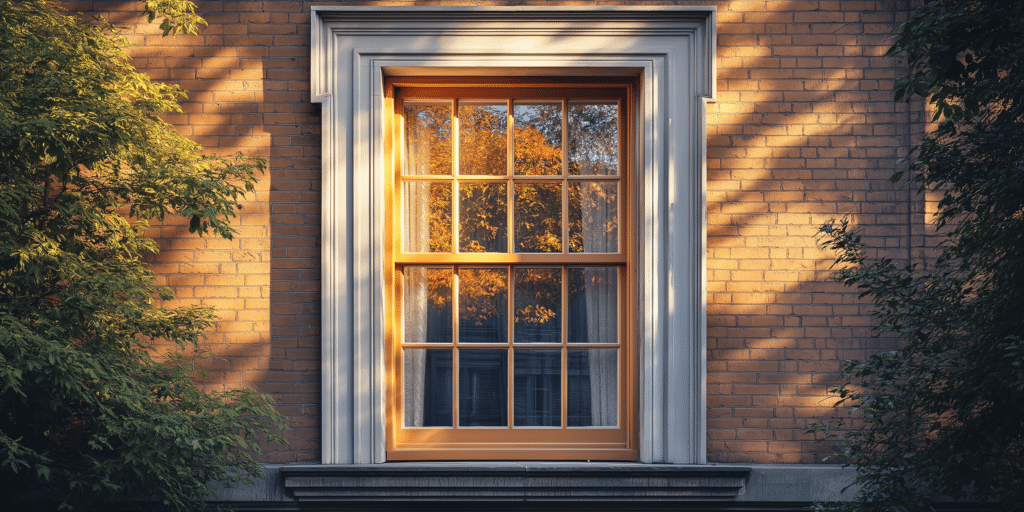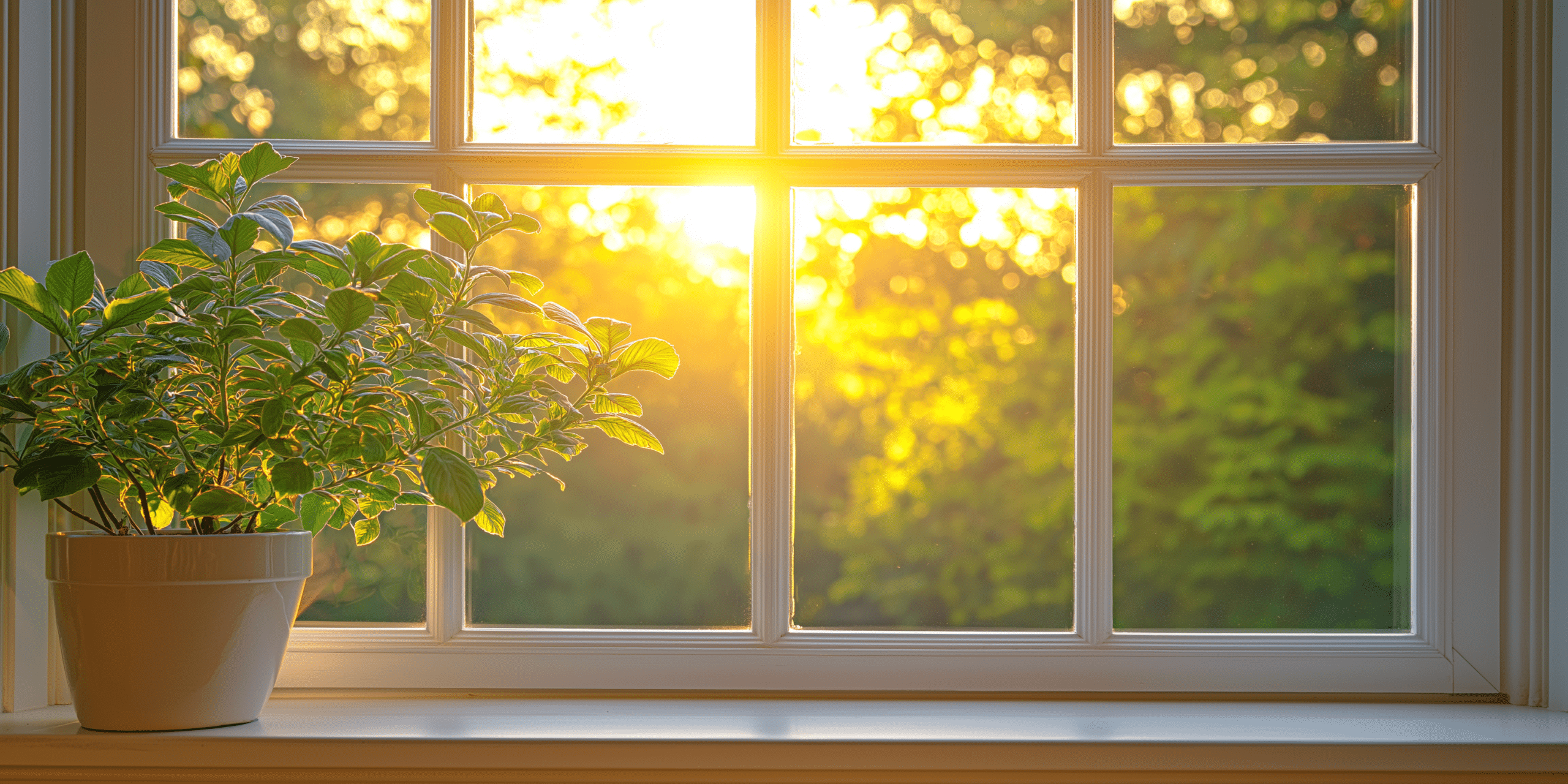What Are Muntin Bars and Why Are They Important?

Muntin bars, sometimes called glazing bars or window grids, are slender strips of material that divide a window’s glass panes into individual sections. Historically used in Georgian, Victorian, and Edwardian sash windows, they offer both a decorative and structural function.
Muntin bars maintain the structural integrity of traditional windows by supporting smaller panes of glass, which were once necessary due to the limitations in glass production. They also create the classic grid patterns seen in period properties.
Muntin bars can impact the thermal performance of modern windows, especially those incorporating double glazing or triple glazing. When muntin bars are integrated into insulated glass units (IGUs), they reduce heat transfer, improving the window’s overall energy efficiency.
Period features such as sash windows with properly restored muntin bars can significantly enhance a property’s market value.
What Materials Are Used in Muntin Bar Fabrication?
The materials used for muntin bars are varied, depending on the desired aesthetic, the window’s period, and its thermal performance. The most common materials include timber, aluminium, composites, and, more recently, uPVC.
- Timber offers traditional elegance and is typically used to restore listed buildings, while aluminium is a more modern option, ideal for improving energy efficiency.
- Timber, especially untreated, may require more regular maintenance to prevent rot and weather damage, whereas powder-coated aluminium is highly resistant to the elements.
- The weight of the material used for muntin bars can affect the overall balance of the window. Heavy timber may require the addition of sash weights or spring balances to ensure smooth operation.
How Are Muntin Bars Fabricated?
The fabrication of muntin bars requires precision and technical expertise. The process typically begins with accurate measurements, followed by cutting the chosen material into slim strips that are then joined using advanced techniques to form a secure and seamless grid within the sash window.
- Fabricating muntin bars for timber windows often requires traditional tools like chisels, planes, and dovetail saws, while fabricating aluminium muntin bars might involve CNC machines and laser cutters for high precision.
- After cutting, muntin bars are fitted into the sash window using mortise and tenon joints or mechanical fasteners, depending on the material.
- Muntin bars are sometimes integrated into the sealed units of double-glazed windows as internal grids to maintain the traditional aesthetic without compromising the window’s thermal insulation.
What Are the Different Types of Muntin Bars?

There are many types of muntin bars, each suited to different styles of windows and periods of architecture. From the simple elegance of Georgian glazing bars to the more ornate designs found in Victorian sash windows, the style of muntin bar can significantly influence the overall aesthetic.
- If you’re restoring a Georgian townhouse, you may opt for slim, grid-like muntins, while a Victorian terrace might benefit from larger, more decorative glazing bars.
- Many manufacturers offer custom muntin bar designs that blend modern materials with traditional aesthetics.
- Georgian sash windows typically feature six or more panes per sash, while Victorian designs may feature two large panes per sash, divided by a central glazing bar.
How Do Muntin Bars Impact Window Restoration?
Muntin bars are a defining feature of traditional sash windows and play a vital role in heritage restoration projects. Replicating muntin bars’ original design and materials is essential in preserving the authenticity of listed buildings and heritage properties.
- Many heritage buildings are listed, meaning that any changes or repairs must adhere to strict guidelines. Original materials like timber are often necessary for listed properties, but modern techniques can improve durability.
- While timber is the traditional choice, some projects allow for using aluminium or composite materials as long as the appearance mimics the original muntins.
- Restoring muntin bars in historical properties often requires sourcing specialised materials and employing traditional joinery techniques.
How to Maintain Muntin Bars for Longevity?
Regular maintenance is crucial to the longevity of muntin bars, especially those made from timber. Over time, exposure to the elements can lead to warping, rotting, or loosening of the joints, all of which can compromise both the appearance and functionality of the window.
- Timber muntin bars should be regularly inspected for signs of rot or insect infestation. Applying a fresh coat of paint or varnish every few years can help protect them from moisture.
- Aluminium muntin bars are generally low maintenance, requiring only occasional cleaning with mild detergent to prevent the build-up of dirt and grime.
- If muntin bars show signs of significant damage, such as cracks or warping, it may be more cost-effective to replace them rather than attempt repairs.
What Are the Benefits of Using Energy-Efficient Muntin Bars?

Incorporating energy-efficient muntin bars into your window design can improve your home’s thermal performance and reduce your energy bills. By choosing the right materials and design, muntin bars can complement modern double-glazed windows to enhance insulation significantly.
- When used in double glazing, muntin bars help maintain an airtight seal between panes, reducing heat transfer.
- Materials like aluminium with thermal breaks or composite muntins can improve a window’s energy efficiency.
- The material and design of muntin bars can impact a window’s U-value, a measure of heat transfer.
What Are the Key Challenges in Muntin Bar Fabrication?
Fabricating muntin bars, especially for bespoke projects or heritage properties, can present various challenges. Precision is essential to ensure that the bars fit correctly within the window frame and align perfectly with the sash.
- Timber muntin bars can warp or twist during the fabrication process if not properly dried and treated.
- Tools like CNC routers and laser cutters can ensure that muntin bars are fabricated with millimetre precision.
- Ensuring that muntin bars are faithfully replicated in material and design is crucial for listed buildings and restoration projects.
How Can Muntin Bars Be Integrated into Modern Sash Windows?
Integrating muntin bars into modern sash window systems requires balancing the traditional aesthetics of muntins with contemporary performance requirements, such as energy efficiency and durability. Modern materials and techniques allow for greater flexibility in design while ensuring optimal functionality.
- In modern sash windows, muntin bars are often fitted between the panes of double-glazed or triple-glazed units to retain the look of traditional windows while maintaining high thermal performance.
- Many conservation areas require windows to retain their original appearance. To comply with conservation regulations while improving window performance, have you considered using bespoke muntin bars in materials like composite or thermally broken aluminium?
- Muntin bars can be fabricated from sustainable materials like FSC-certified timber or recycled aluminium, making them environmentally friendly.
How Does Muntin Bar Fabrication Affect the Overall Cost of Sash Windows?

The fabrication of muntin bars can significantly influence the overall cost of sash window installation or restoration. Factors such as the choice of material, design complexity, and the need for bespoke fabrication all contribute to the final price.
The material chosen for the muntin bars (e.g., timber, aluminium, uPVC) is a primary cost factor. More intricate designs or bespoke specifications, such as handcrafted glazing bars, may increase costs. Custom muntin bar designs or those required for listed buildings often demand more craftsmanship and attention to detail.
For heritage properties, it is sometimes more cost-effective to repair existing muntin bars rather than replace them.
How Can You Ensure Muntin Bar Durability in Harsh Weather Conditions?
Durability is a critical factor in the performance of muntin bars, especially in regions prone to extreme weather. The material, design, and treatment of the muntin bars all affect how well they withstand exposure to the elements, including moisture, wind, and temperature fluctuations.
Aluminium and uPVC muntin bars are known for their durability and resistance to rust and corrosion, making them ideal for coastal areas or regions with high humidity. Timber muntin bars can be treated with preservatives and sealed with weatherproof coatings to increase their lifespan.
Regular maintenance, including repainting or re-varnishing timber muntins and cleaning aluminium or uPVC muntin bars, will help maintain their appearance and performance.
Final Thoughts: Achieving the Perfect Balance
When fabricating muntin bars, finding the perfect balance between traditional aesthetics and modern performance is key. Whether you are restoring a period property or designing new sash windows, selecting the right materials, design, and fabrication techniques will ensure that your windows look stunning and stand the test of time.
Well-crafted muntin bars, particularly those used in traditional sash windows, add both aesthetic appeal and historical authenticity to a property, enhancing its market value. Muntin bars integrated into modern double- or triple-glazed units can significantly improve a window’s thermal performance without compromising style.
As technologies advance, 3D printing and automated fabrication could become more common in muntin bar production, allowing for even more precision and customisation.
In conclusion, the fabrication of muntin bars remains a vital aspect of both traditional window restoration and modern window design. By choosing the right materials, employing advanced fabrication techniques, and maintaining regular upkeep, muntin bars can provide both aesthetic beauty and functional benefits to any sash window.




